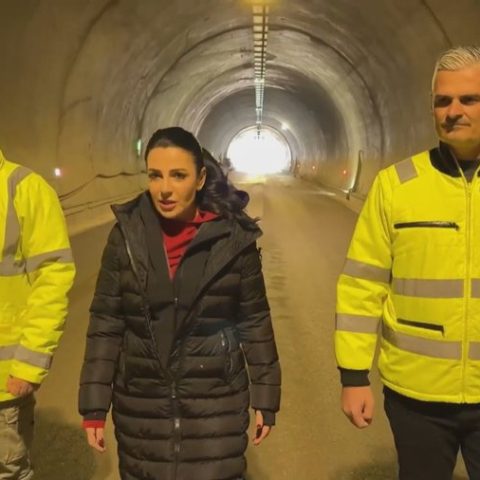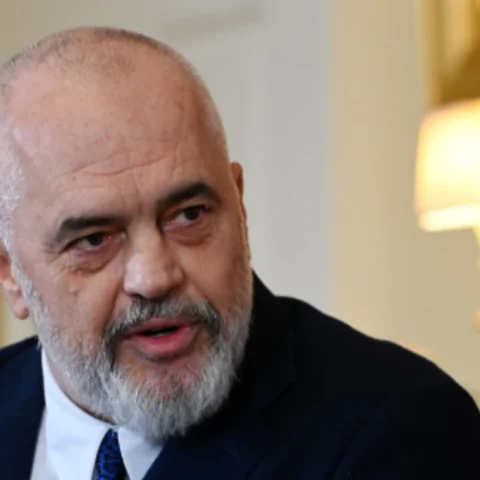TIRANA, March 20- President of the People’s Republic of China Xi Jinping will be visiting Rome on March 21, Voice of America reports. The purpose of the visitation is a discussion and an expectation of Italy to join the Chinese project “One Belt, One Road.”
According to analysts during president Xi’s visitation, Italy is expected to sign a non-compulsory memorandum of understanding. This treaty will open the pathway to construction and financing projects from the Asian Infrastructure Investment Bank (AIIB) centers in Beijing.
“The memorandum is percepted more as a way to ensure more exports in China and more opportunities to get funds from the Asian Infrastructure Investment Bank,” said Alessia Amighini, co-chief of Center for Asia in ISPI, a research group based in Rome.
Rome is thus trying to reduce the trade deficit with China and avoid some major expenses by attracting Chinese investments as also the AIIB in grand infrastructural projects. The agreement will also give a better approach to Chinese companies in the overloaded seaport of Trieste, and thus to the entire Mediterranean region. According to Italian sources, Rome is considering the option to invite Chinese companies to expand or menage three other Italian marinas, that of Genova, Palermo, and Ravenna.
“Italy is thirsty to attract investments, to improve her competitive position in relation to other northern European corridors and ports,” said Amighini.
Analysts claim that China is obviously exploiting the competition within the Eurozone and is trying to take away an important member by offering a number of attractive conditions. The signing of the Memorandum of understanding would amount to a major political success for China in a time when concerns and criticism surround its infrastructure plan.
The United States are critical towards this billion dollar project and have warned of its risk to a “debt-trap diplomacy,” which is a type of diplomacy based on debt carried out in the bilateral relations between countries. The countries of EU are concerned that this plan can increase the disruptions to an already tense coalition, and Italy is one of the founding member of the EU. Thus, it can open Beijing some doors to Eurozone.
So far, the largest road infrastructure projects have been linked to countries with considerable financial difficulties, such as Sri Lanka, Pakistan, Maldives, and Greece. With Italy’s decision to join this plan, China will work with a country that the fear for a debt-trap is small. However, the decision can challenge Europe’s connecting infrastructure strategy, a plan published in September 2018 which aims the connection within Europe and Asia by echoing the stability standards and practices based on rules.
Analysts are waiting to understand whether president Xi will offer Italy a modified project in accordance to the European standards. These standards however, would strip China from its ability to lower costs and reduce its competitive advantage.
“I don’t expect China to display more flexibility. In any case, I don’t the financing conditions as a realistic matter in Europe,” said Amighini.
Europe’s disruption
Teresa Coratella who serves as program manager at the European Council of Foreign Affairs in Rome said that this step that the Italian authorities are undertaking, has the potential to create disruptions within the European Union in a time when the block is working on mutual approach towards the Chinese investments.
Both the US and France have expressed a dissatisfaction on this move Rome is taking, as German officials are said to be lobbying against the memorandum of understanding. Italy is the only country from G7 that is joining the “One Belt, One Road.” G7 is a group of seven countries, Canada, France, Germany, Italy, Japan, the United Kingdom, and the United States, which are the seven largest advanced economies in the world, representing 58 percent of the world’s GDP.
“Italy is a major global economy and great investment destination. No need for Italian government to lend legitimacy to China’s infrastructure vanity project,” tweeted Garrett Marquis, the US National Security Council spokesman.
French President Emmanuel Macron expressed discontent on Rome’s decision and has called out to all European Union members for a “coordinated approach” towards China’s plans. Zhiqun Zhu who is the Chair of Department of International Relations at the Bucknell University in Pennsylvania, said that the United States are overreacting to the idea of a Chinese threat in all matters, the infrastructure plan included.
“Italy and other countries should take their own decisions instead of being forced to choose over USA or China,’’ said Zhu.
The “One Belt, One Road” initiative is a development strategy adopted by the Chinese government involving infrastructure development and investments in 152 countries and international organizations in Europe, Asia, Middle East, Latin America and Africa. “Belt” refers to the overland routes for road and rail transportation, called “the Silk Road Economic Belt”; whereas “road” refers to the sea routes, or the 21st Century Maritime Silk Road. The Chinese government calls the initiative “a bid to enhance regional connectivity and embrace a brighter future,” but some observers see it as a push for Chinese dominance in global affairs with a China-centered trading network.










